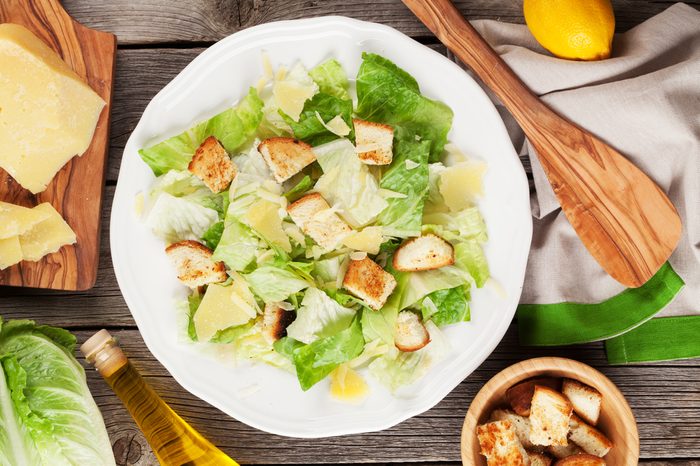
Caesar salad: Tijuana, Mexico
Given its name, it’s perfectly understandable one might assume the king of the salad section hails from ancient Rome. And while an Italian did create what the International Society of Epicure once named the greatest recipe to originate in the Americas in the last half-century, romaine lettuce stalks, olive oil, raw egg, croutons, parmesan cheese, and Worcestershire sauce were first tossed together in Baja California’s Caesar’s Restaurant. According to Food & Wine, Caesar Cardini moved to North America in the 1910s, opening restaurants in Sacramento and San Diego, before making a run for the border town of Tijuana, Mexico, which was experiencing a tourism boom in the 1920s thanks to prohibition. Legend has it that his Avenida Revolución eatery was overrun with thirsty tourists and running low on supplies on July 4, 1924, when he took what was left and attempted to make a finger food tableside. Some claim it was his brother Alessandro who invented it while others say he was only responsible for adding anchovies. Another theory: Italian immigrant/employee Livio Santini based it on his mama’s recipe, but Cardini took credit for the instant hit. Either way, fans can savor the original salad in its birthplace as a renovated Caesar’s reopened in 2010.
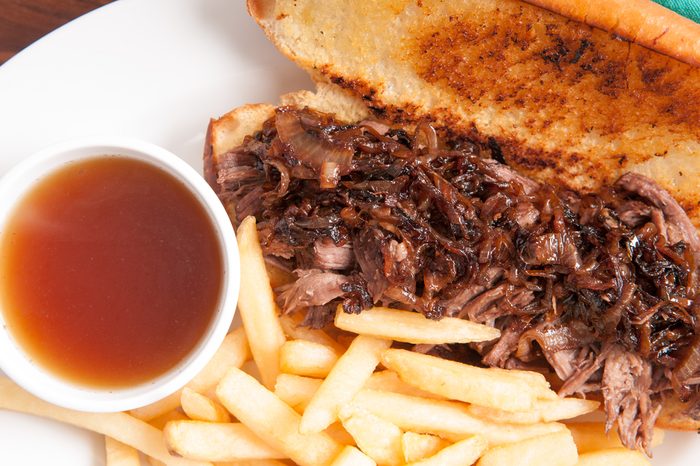
French dip sandwich: Los Angeles
A war has long waged in the streets of downtown Los Angeles between two longtime (and still-operating) diners, Philippe’s and Cole’s, regarding who fathered the French dip sandwich. When stacked up, most concrete evidence points to the former although various owners have disagreed on specifics over the years. A 1951 Los Angeles Times’ interview with the original 1908 owner Philippe Mathieu finds the French-born cook explaining that he created the wet roast beef sandwich on a lark for a counter regular who saw the jus in the pan. The restaurant’s website argues that the creation was a result of Mathieu accidentally dropping the French roll from a policeman’s order into the roasting pan still filled with hot juices in 1918. The cop ate it anyway, came back for more, and brought friends who also wanted to sample the meaty mishap. Other accounts involve a fireman, pork, a stale roll, and 1917. Thrillist argues that the name supports Mathieu’s claim given that he was from France and might also be a double entendre meant to be funny as it shared its name with a waistline type said to make the wearer appear thinner that was becoming trendy. Cole’s, whose sign still declares them the titleholder in neon, argues that they invented it by accident in 1908, but no printed mentions support the German owner’s claim until after Philippe’s reputation had blossomed.
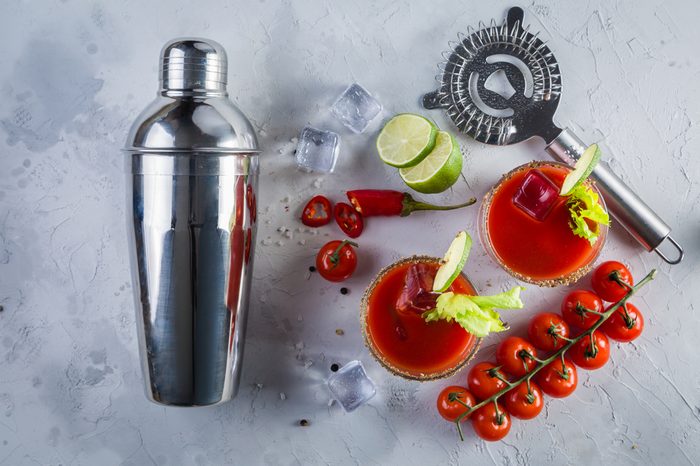
Bloody Mary: New York City
Seems appropriate that one of the most popular brunch beverages was first poured in The City That Never Sleeps. In 1934, Serge Obolensky, an aristocratic Russian man about town, waltzed into the King Cole Bar at the St. Regis New York and asked bartender Fernand Petiot to pour him a Bloody Mary. He’d sampled an early version of Petiot’s vodka and tomato juice cocktail at Paris’s La Maisonette Russe where the mixologist previously worked. Petiot perfected a zestier recipe that day adding salt, pepper, lemon, and Worcestershire sauce. The moniker was deemed too unrefined for the hotel’s elegant clientele, so it was rechristened Red Snapper. Today, imbibers can partake in Petiot’s piece de résistance under the same 1906 Maxfield Parrish mural. Or they can walk into any St. Regis and try a local spin on the libation, now the brand’s signature cocktail. For example, the St. Regis in Abu Dhabi adds smoke and za’atar as a nod to hookah lounges, Punta Mita’s makes it with tequila and Mexican Maggi sauce, and the Washington, D.C., branch starts with gin and incorporates horseradish, clam juice, and Old Bay Seasoning to evoke a classic Chesapeake Bay crab boil.
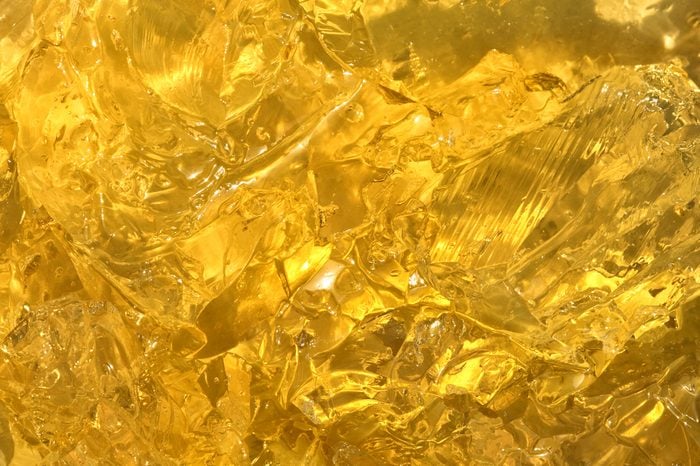
Jell-O: LeRoy, New York
In 1897, carpenter Pearle Wait was mixing a cough remedy and laxative tea in his home kitchen when he started experimenting with gelatin. The result of that tinkering, according to the Jell-O Museum‘s website, was a fruit-flavored dessert whose name was coined by his wife May. Wait tried to market the wiggly treat, lacking funds and experience; he ultimately sold the trademark in 1899 for $450 to fellow LeRoy-ian and successful proprietary medicines manufacturer Orator Frank Woodward. He too gave up and sold it to Sam Nico for $35. The third sale was a charm as the Genesee Pure Food Company started selling Jell-O in 1900 and reported $250,000 in sales in 1902 when the packets were still stuffed by hand and sold from horse-drawn wagons. The first four flavors were orange, lemon, strawberry, and raspberry. Lime was not introduced until 1930. The meteoric rise of J-E-L-L-O was certainly helped by advertising that utilized artists like Norman Rockwell and the aforementioned Parrish and comedian Jack Benny.
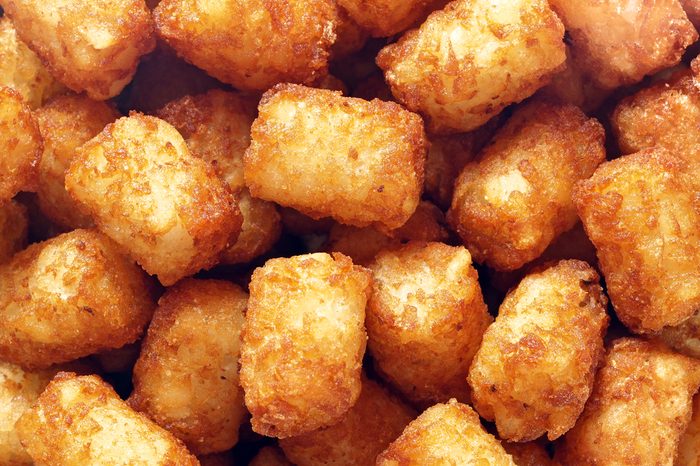
Tater tots: Oregon and Miami
Convinced the future of food was in the frozen aisle, brothers F. Nephi and Golden Grigg mortgaged their Idaho corn and potato farms to buy a flash-freezing factory on the border in Oregon. (Hence the company name Ore-Ida.) By 1951, the Mormon siblings had become the largest distributor of sweet corn in the United States. But the big money was in French fries even though the machines that cut potatoes into fries produced a lot of starchy scraps. At first, they fed the waste to their livestock but eventually decided to try to create a secondary revenue stream with it. With help from new machines, they smooshed the leftovers together, blanched them, formed them into bite-size bits, cooked them in oil, and froze them, according to letters in Nephi’s personal archive housed at the University of Utah’s library. With the alliterative name trademarked, the Griggs headed to the 1954 National Potato Convention, which was being held at the shiny new Fontainebleau Miami Beach, to introduce their small potatoes. Because tasting is more effective than telling, Nephi smuggled 15 pounds of tots into the hotel’s kitchen and bribed the head chef to fry and serve them at breakfast. Don’t miss these 50 secrets food manufacturers won’t tell you.

Fudge brownies: Chicago
Bertha Palmer, Windy City philanthropist, wife of Palmer House Hotel owner Potter Palmer, and president of the Board of Lady Managers, found herself in the middle of a dessert dilemma in 1893. Headed to the World’s Fair Columbian Exposition in Chicago with her squad, she needed a portable pastry that would please the ladies who were going to boxed lunch with her there. She asked the hotel’s pastry chef for help, and he cracked the confection code with a cake-like square with walnuts and apricot glaze. The term brownie came later; the first-known printed use of the word was in the 1896’s Boston Cooking-School Cook Book by Fannie Farmer. Now a Hilton, the Palmer House bakes up batches using the original recipe for its restaurants and offers a History Is Hott tour with the resident historian that ends with a chocolate chunk fresh from the oven. Also introduced at that same Columbian Exposition, according to the Daily Herald, were De Cecco pasta, Milwaukee’s Pabst beer, Cracker Jacks, and North Dakota’s Cream of Wheat.
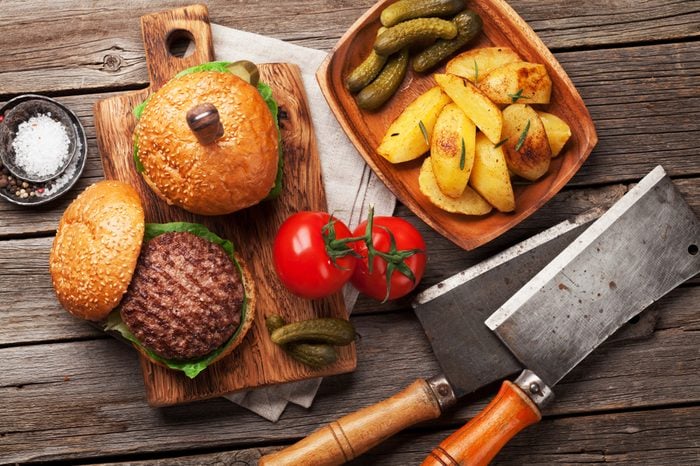
Hamburger: New Haven, Connecticut
Louis Lassen, an immigrant from Denmark, opened a lunch wagon in his New Haven backyard in 1895. According to legend—one recognized by the Library of Congress—the burger was born when a local businessman came to Louis’ Lunch five years later in need of a fast takeout option. Lassen grilled a hand-rolled patty made from his proprietary blend of five cuts of hand-ground steak trimmings and placed it between two slices of toast. The restaurant, run by the fifth generation of Lassens, still cooks burgers on the original cast-iron grills and serves them on white bread. Hamburger buns supposedly came along in 1916 courtesy of White Castle founder Walter Anderson. The cheeseburger’s beginning is also hotly contested, but one heart-warming theory is that sometime between 1924 and 1926 a Pasadena, Calif., cook named Lionel Sternberger served a homeless man who’d obtained 15 cents and asked for a burger with everything. According to Laist.com, he included cheese and from that day on sarcastically sold the Aristocratic Burger at The Rite Spot. Another version says Sternberger added cheese to cover up the side he burnt. If true, surely he had the last laugh thanks to the cheeseburger’s ensuing popularity. Lois’ Lunch still ranks as one of the best retro burger joints in the United States.
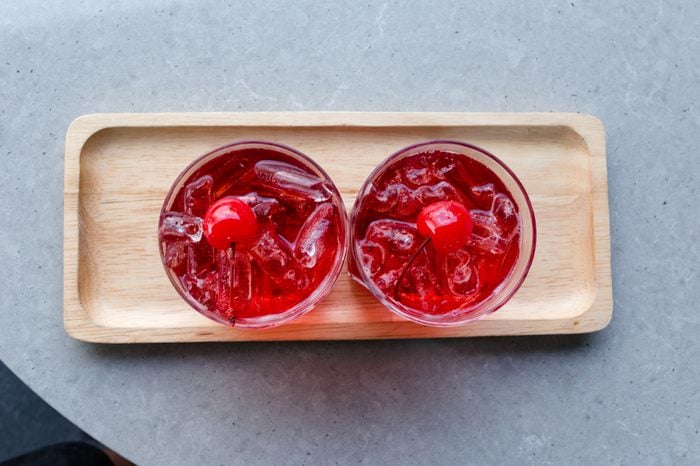
Kool-Aid: Hastings, Nebraska
After moving to the southwestern section of the Cornhusker State in 1900, Edwin Perkins, fascinated by chemistry and determined to become a self-made success, was always tinkering in his mother’s kitchen. Fruit Smack, a sugary drink that came in six flavors and four-ounce bottles, was his first hit. But the struggle was real when it came to shipping glass containers due to breakage and high costs. In 1927, Perkins developed a method to remove the liquid. He repackaged the leftover powder in envelopes he designed and printed under the new name Kool-Ade. Eventually, he adjusted to the current spelling. Learn all about Perkins and the brand’s history at the dedicated exhibit within the Hastings Museum.
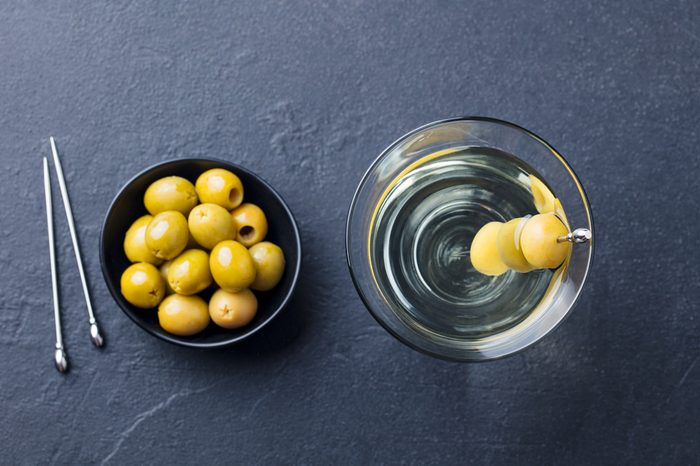
Martini: San Francisco or Martinez, California
James Bond may never know who shook (but didn’t stir!) the first of his favorite drink. However, the martini mystery can be narrowed down to the late 19thcentury when it first started appearing in bartending manuals. But in what might be the original Battle For The Bay, San Francisco and the inland hamlet of Martinez both contend to be the cradle of cocktail civilization. San Francisco lays claim to its creation because the recipe and name can be traced back to the 1887 guide of Jerry Thomas, a barkeep at the Occidental Hotel (now the Galleria Park Hotel), who supposedly made the drink for a miner and called it the Martinez because that’s where the prospector was headed next. But according to CityofMartinez.org, the recipe made its way to Thomas via a miner who had sipped the spirits in their fanciest bar in 1849. The story goes that the miner had struck gold and stopped in Martinez to celebrate on his way back to SF. He requested Champagne, which they did not have, so the bartender suggested a Martinez Special made with Old Tom gin, vermouth, bitters, maraschino liqueur, and a lemon slice. He proceeded to order them for the house and get wasted. When he eventually woke up, he continued on to San Francisco and requested the Martinez at a bar there. Having never heard of such a drink, the miner had to instruct the bartender on the ingredients (he added an olive). He liked it so much that it was added to the regular rotation. Here are 17 uses for alcohol besides drinking it.
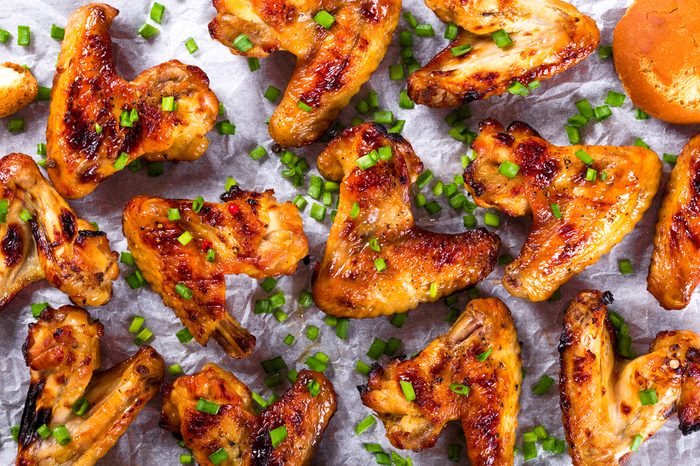
Hot wings: Buffalo, New York
Super Bowl parties and sports bars wouldn’t be the same if it weren’t for the spicy finger-staining snack invented in upstate New York in 1964. Although some of the details remain disputed, the basic facts surrounding the origin of Buffalo wings are generally agreed upon, according to TIME. Teressa Bellissimo, who owned the Anchor Bar, is believed to be the first person to coat chicken wings in cayenne pepper, hot sauce, and butter and serve them with sides of blue cheese and celery because that’s what was what she had on hand. Her husband told the New Yorker that they’d wrongly received a shipment of wings and she had to figure out a way to make use of the mistake. Her son sang a different tune. He says he’d been partying with friends and asked his mom to make them a midnight snack and hot wings were the result of that request. All three have since passed, so we’ll never know which story is true. The city hosts a festival in the pub grub’s honor every Labor Day weekend. Find out how you’ve been eating chicken wings wrong your whole life.
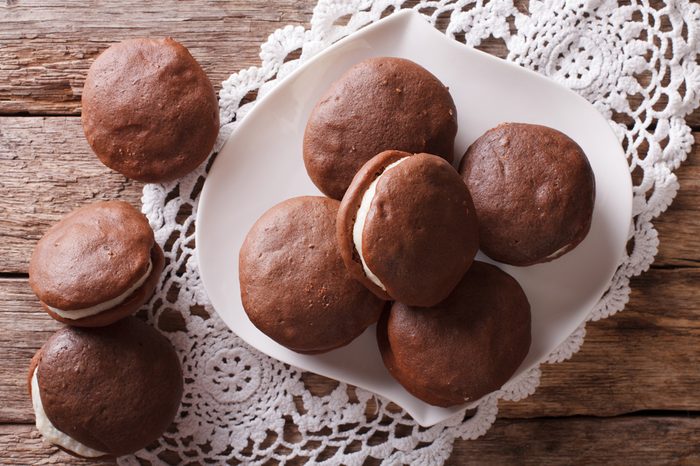
Goo Goo Clusters & MoonPies: Tennessee
Both of these old-timey treats hail from the Volunteer State. Goo Goo Clusters, the first combination candy bar created commercially, were born in 1912 when Howell Campbell Sr. and Porter Moore were testing new ingredients in a copper kettle at Nashville’s Standard Candy Company and landed on the sweet tooth satisfying combo of milk chocolate, peanuts, caramel, and marshmallow nougat. Attempt to make your own in a cluster class at their current Nashville store. Over in Chattanooga, five years later, Earl Mitchell was experimenting with ways to fulfill a Kentucky coal miner’s request via one the bakery’s traveling salesman for a snack “as big as the moon.” The solution? Two round graham crackers filled with marshmallow and dipped in chocolate that was originally sold for five cents. By 1929, the bakery opened a MoonPie-specific factory to meet growing demand including WWII troop rations. Don’t miss the history behind 8 other vintage candies.
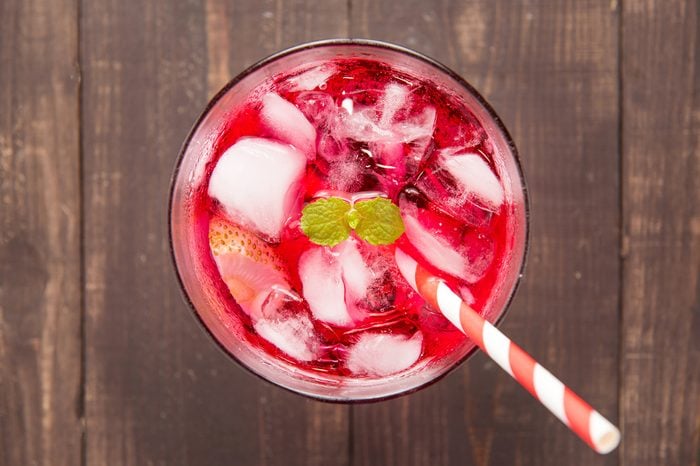
The Shirley Temple: Beverly Hills, Hollywood, or Honolulu
A heated debate still rages on about the original recipe and the mastermind behind America’s most famous mocktail. Some make Shirley Temples with a lemon-lime soda like Sprite or 7UP while others start with ginger ale before adding the splash of grenadine and the maraschino cherries. The Royal Hawaiian Hotel claims its bartenders first mixed the pink drink for the ringlet-ridden seven-year-old when she vacationed at The Pink Palace in 1935 and dined in the opulent Persian Room. Chasen’s, a longtime celebrity haunt in Beverly Hills, contends that they first served it to commemorate the child star’s birthday. The Brown Derby, another popular movie star hang back in the day, has also thrown their hat in the ring as the inventor. Ironically, the star’s relationship with her namesake drink was far from positive. In the ’80s, Temple engaged in a legal battle over the right to use her name with beverage companies who wanted to bottle pre-mixed Shirley Temple-flavored sodas. She also called them “saccharine, icky drinks” during a late-in-life interview with NPR.
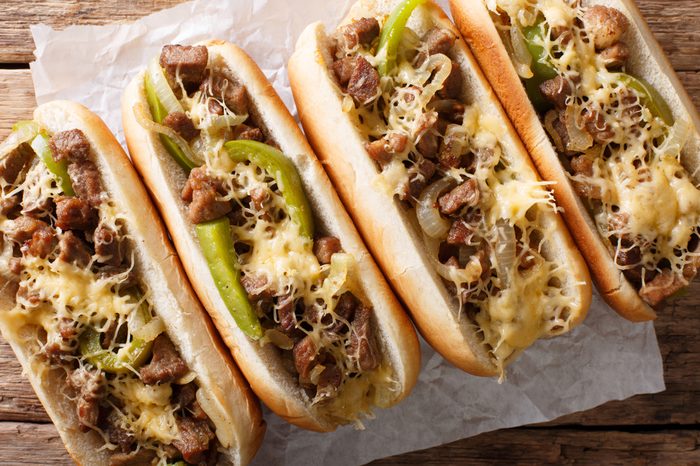
Cheesesteak: Philadelphia
Given that they’re usually referred to as Philly cheese steaks, it’s probably not surprising to learn that this greasy geo-tagged grub’s hometown is the City of Brotherly Love. What is shocking is that the frizzled beef (made by chopping the meat while it’s still being grilled in oil) and onion sandwiches were originally served with pizza sauce instead of the now standard American, provolone, or Cheese Whiz at Pat and Harry Olivieri’s Italian Market hot dog stand when they made the first hallowed hoagies in 1930. The concept of adding dairy goodness came courtesy of one of Pat’s cooks. Pat’s King of Steaks is still slinging the sammies today, forever deadlocked in the battle for the best cheesesteak with rival Geno’s.
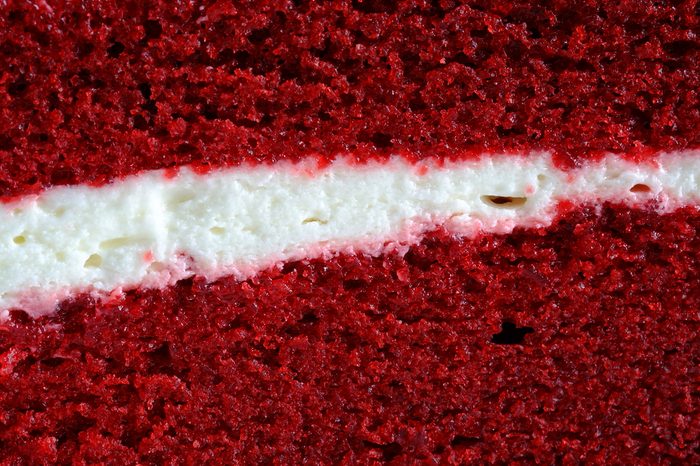
Red velvet cake: New York City
The armadillo-shaped cake cameo in Steel Magnolias might be to blame for the common misconception that red velvet cake originated in the South. But velvet cakes sans coloring were baked by Victorians in the 1800s using almond flour, cocoa or cornstarch to soften the flour protein and turn out finer-textured treats. By the 1930s, recipes for red devil’s food cake (a.k.a., Christmas cakes) were circulated in West Coast and Midwest newspaper columns. According to the New York Times, a Waldorf Astoria archivist says the scarlet snack, then likely brightened by beet juice, debuted on the hotel’s menu in the 1930s as well. The brand’s mythology explains that the chef kept the recipe a secret until a guest wrote asking for it. Allegedly, he gave her the details and an invoice for $350, which made her mad enough to share the how-to details with her who’s-who-in-Manhattan-filled address book. The luxury lodgings are also widely credited with being the birthplace of eggs benedict and the Waldorf (duh!) salad. Its popularity spread like wildfire after government regulations on food dyes were established in 1938. Here are 9 quirky facts we bet you didn’t know about the origins of some your other favorite foods.
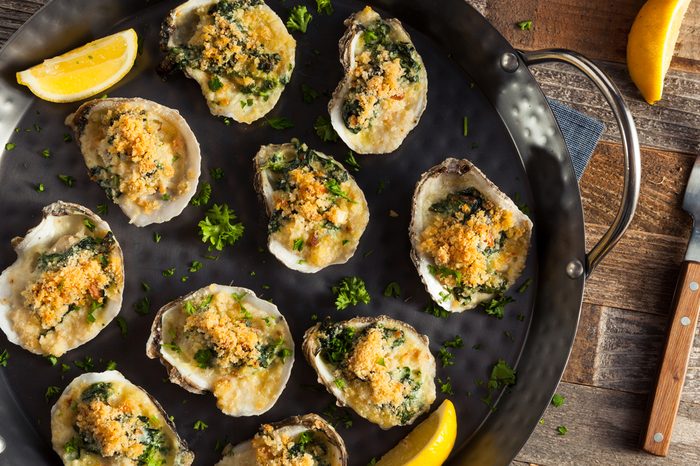
Oysters Rockefeller: New Orleans
As of late 2017, Chowhound reported that more than four million orders of Oysters Rockefeller had been served at Antoine’s, the iconic 178-year-old Big Easy bastion of French-Creole fine dining where the seafood showstopper was first cooked up. In 1899, chef Jules Alciatore, the French-trained son of the founder, was faced with a snail shortage. So he smartly swapped escargot with plentiful and plump Gulf Coast oysters. His original recipe used watercress instead of spinach in a ratio that he supposedly took to the grave. Also, according to the lore bandied about on Grey Line food and cocktail tours, the dish got its name when a satisfied customer commented, “These are as rich as a Rockefeller.” Louisiana is also the birthplace of Tabasco hot sauce, Popeye’s Chicken, and turduckens.
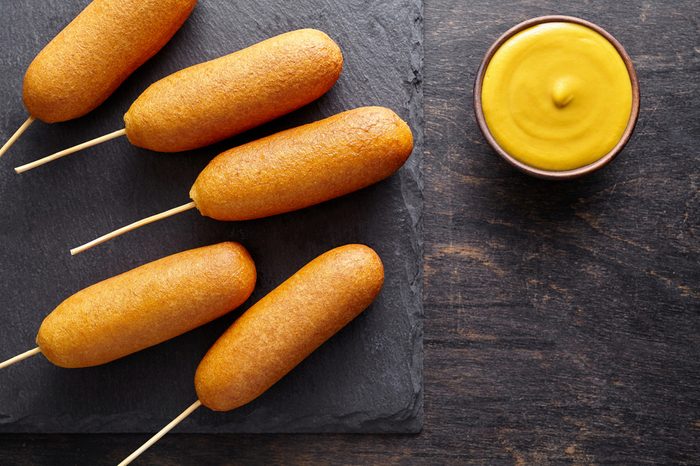
Corn dogs: Amarillo, Texas and Springfield, Illinois
While a college student in Illinois in 1941, Ed Waldmire Jr. recounted the time he ate a “very good wiener baked in cornbread” that “took too long to prepare” in Muskogee, Oklahoma, to fellow student Don Strand whose father was in the bakery business. Five years later, according to the Cozy Dog Drive-in‘s website, Strand sent Waldmire, now stationed at the Amarillo Airfield in Texas, a mix he developed that would stick to a link while it was deep-fried. Using cocktail forks as sticks, he started making crusty curs in the USO kitchen and selling them around the base and in town until he was discharged in 1946. He returned home to Springfield and started selling them that summer as Cozy Dogs—his wife did not like the original name—at the Lake Springfield Beach House and at the Illinois State Fair. By 1949, corn dogs as we know them today were being sold at two restaurants and a drive-in. Now the business is run by Waldmire’s descendants next door to the original location. Find out the best state fair in all 50 states.
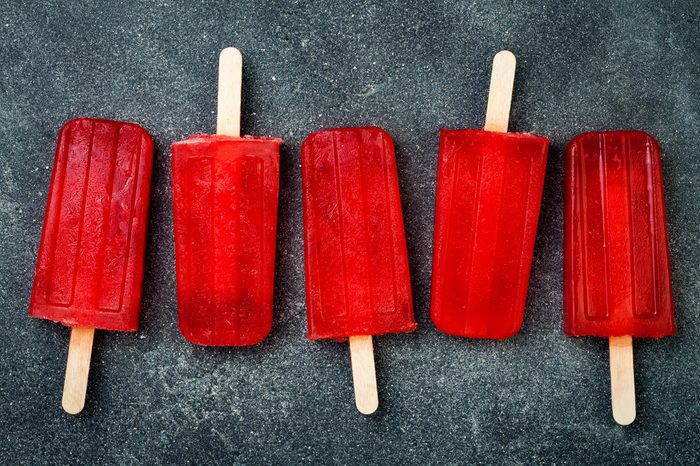
Popsicles: Oakland, California
Like many of the great discoveries, the frozen summertime staple on a stick was stumbled upon by accident. In 1905, 11-year-old Oakland resident Frank Epperson carelessly left his glass of lemonade outside overnight with a mixing stick still in it. It froze and the rest is dessert history. The name Popsicle wasn’t used until 1923. Today, three million are sold every year. Also invented in the Bay Area burg was Rocky Road ice cream—Dreyer’s chocolate, almond, and marshmallow flavor was given the nonsensical handle in 1929 in hopes of making people smile during the Great Depression. Check out 12 other foods invented by accident.
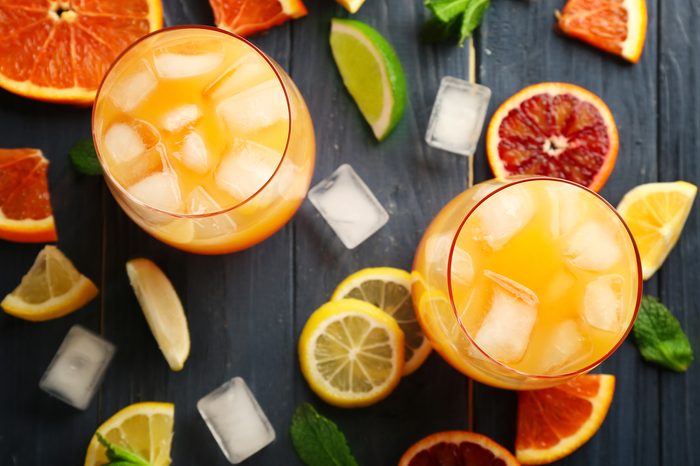
Tequila sunrise: Phoenix
The orange-and-red ombre concoction has strong ties to rock and roll thanks to the popular Eagles’ tune. But the cocktail got its start far from the stage if the lore behind the Arizona Biltmore is to be believed. Gene Sulit started working for the historic landmark in the capital city in the 1930s or early 1940s. During his 35 years of employ, he held a variety of food-and-beverage positions including his favorite, bartender. One day while manning the shakers, a repeat guest asked Sulit to wow him. The only parameters the vacationer established were that he loved tequila most of all and he wanted something perfect for poolside. Sulit supposedly blended club soda, tequila, lime juice, and Crème de Cassis over ice and his creation is still heralded at the resort’s Wright Bar as the original.

Key lime pie: Key West, Florida
Found on the menu of almost every restaurant in the Florida Keys archipelago, key lime pie’s roots can be traced back to a particular kitchen—the one at the Curry Mansion. Now an inn, the house was originally built for William Curry, believed to be the state’s first self-made millionaire. A penniless Curry came to town in 1837 and went from lowly clerk to head of a merchandising, wrecking, and shipbuilding empire. One of the things he imported and sold was condensed milk, according to local historian David L. Sloan, which was hugely popular given the region had no ice or refrigeration until 1930 when the highway finally connected it to the mainland, and fresh dairy was hard to come by or keep. Curry’s Aunt Sally used it—plus lime juice, egg yolks, and graham cracker crust — to create the tart (and pale yellow) dessert in the late 1800s.
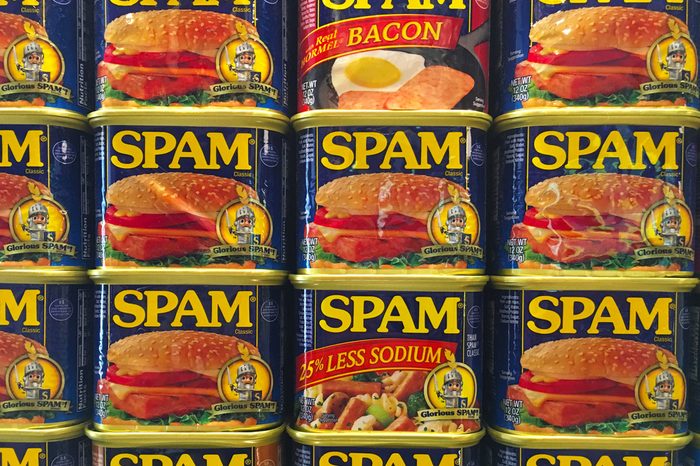
Spam: Austin, Minnesota
The compact square of pork, salt, water, sugar, potato starch, and sodium nitrite contained in the famous blue and yellow can was invented by Jay Hormel, son of the founder of the Hormel company, in rural Minnesota in the late 1920s as a way to reinvent and “peddle the then-unprofitable pork shoulder.” The clever name—a portmanteau for spiced ham—won a Hormel executive’s brother $100 in a contest. Despite the promise of quick, cheap meals, many people were leery of unrefrigerated meat when it first rolled off the assembly line almost 81 years ago. The military quickly found uses for the processed puck of pork, sending more than 100 million cans to troops in the Pacific.
